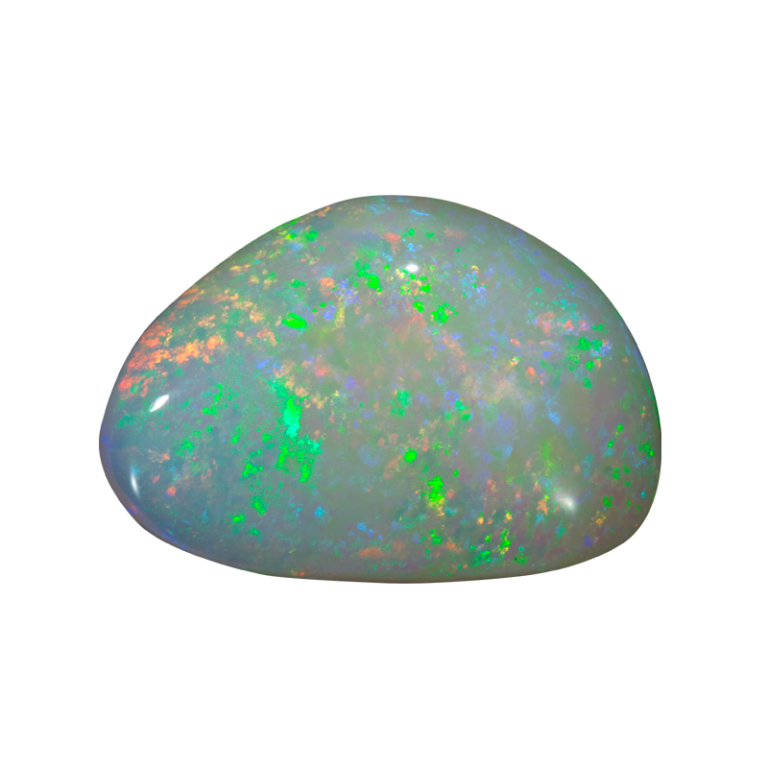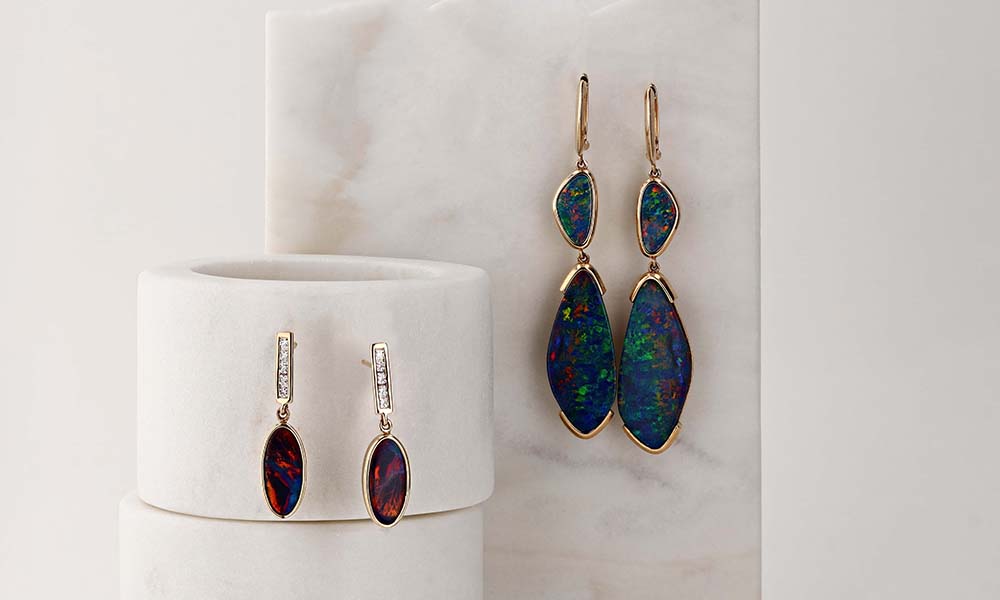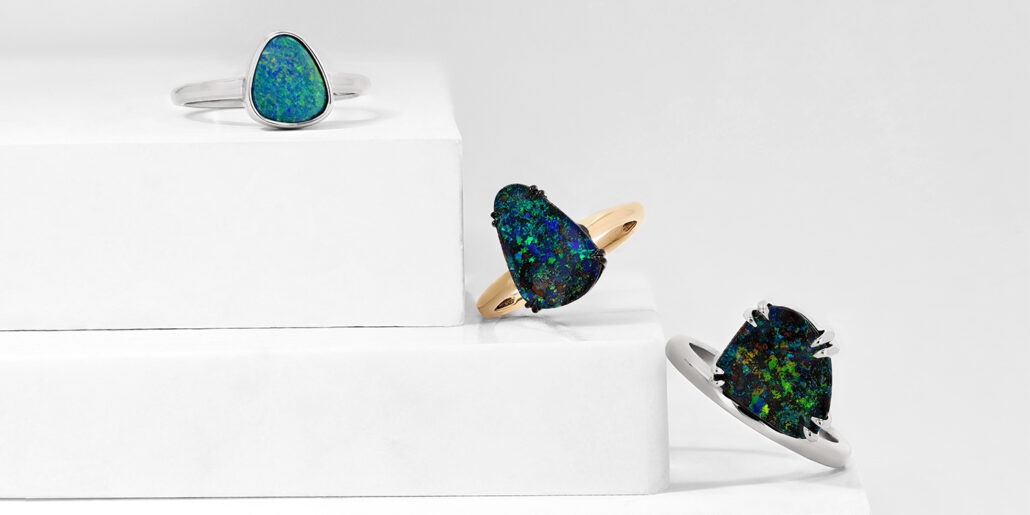Opal: October Birthstone Quick Facts
Opal Color: Yellow, red, orange, green, brown, black, blue, pink, white and colorless
Opal Mohs Hardness Scale Rating: 5.5-6.5
Opal Symbolism & Meaning: Confidence, hope and faithfulness
Opal Zodiac Signs: Libra and Scorpio
Other Recognitions: Traditional gift for the 14th wedding anniversary

What is Opal?
Opal is a noncrystalline form of the mineral silica that contains varying amounts of water, usually between 3 and 10 percent. Light illuminates the inclusions of microscopic drops of water and creates the iridescent phenomena known as play-of-color, where the rainbow-like hues change with the angle of observation.
Unlike other crystalline forms of silica that are categorized as minerals, opal is classed as a mineraloid due to its amorphous character. Opal differs from its crystalline cousin’s quartz and agate because it is formed from shapeless silica lumps rather than from naturally faceted crystals.
How is Opal Formed?
Opal is formed from a mixture of silicon dioxide and water. As rain falls and drenches dry ground in regions such as Australia, the water picks up silica from sandstone as it runs down through the earth. This silica-rich solution is then carried into cracks and cavities that exist due to natural faults or decomposing fossils. As conditions dry up and the water evaporates, a silica deposit is left behind. This process continues to repeat over millions of years, and eventually, opal is formed.
Nowadays, synthetic opals also exist, which are created in laboratories. These lab-created opals are known as “imitation opals” as they contain substances not found in natural opals.
Where is Opal Found?
Precious opal is rare and thus is found in a limited number of locations worldwide. The most precious opal to date has been mined in Australia, with Ethiopia and Mexico being secondary sources of precious opal. Precious opal can also be found in Brazil, Canada, Honduras, Indonesia, Zambia, Guatemala, Poland, Peru, New Zealand, and the United States, specifically Nevada, Oregon and Idaho. In 2008, NASA announced that Mars also contains opal deposits.

Opal Color, Characteristics & Value
Unlike other gemstones, each opal is unique – no two are the same. The two most common types of opal found in nature are precious opal and common opal. Precious opals exhibit the play-of-color characteristic while common opals do not. Opals occur naturally in various colors, including yellow, red, orange, green, brown, black, blue, pink, white and colorless. There are five main types of opal:
- White opal — translucent to semi-translucent, with play-of-color against a white or light gray background color, called body color.
- Black opal — translucent to opaque, with play-of-color against a black or dark background.
- Fire opal — transparent to translucent, with brown, yellow, orange, or red body color. This material—which often doesn’t show play-of-color—is also known as “Mexican opal.”
- Boulder opal — translucent to opaque, with play-of-color against a light to dark background. Fragments of the surrounding rock, called matrix, become part of the finished gem.
- Crystal or water opal — transparent to semitransparent, with a clear background. This type shows exceptional play-of-color.
Black opal is considered to be the most valuable opal, while white opals are generally the least valuable.
Opal Care & Cleaning
Softer and more fragile than other gemstones, opals require special care to prevent scratching and cracking. Opals have high water content and can dry out, causing them to break. To help prevent drying and cracking, avoid storing your opals in airtight areas, such as a safety deposit box. Additionally, heat and sudden temperature changes may also cause opals to crack, so they should not be put into an ultrasonic or steam cleaner. The safest way to clean an opal gemstone is with warm, soapy water and a soft cloth. Other cleaning methods could damage the opal itself or the filler material. When not worn, opal jewelry should be stored away from other gemstones in a jewelry box lined with soft fabric.
Opal Jewelry & Gift Ideas
Whether you are shopping for yourself or someone else, Borsheims has an extensive selection of opal jewelry in various styles. Opal is a popular gift option for those celebrating October birthdays and those commemorating their 14th wedding anniversary. If you need help picking out the perfect piece of opal jewelry, one of our experts would be happy to assist you. Stop into our store or text or call 402.391.0400 during store hours to speak with one of our friendly and knowledgeable sales associates.

